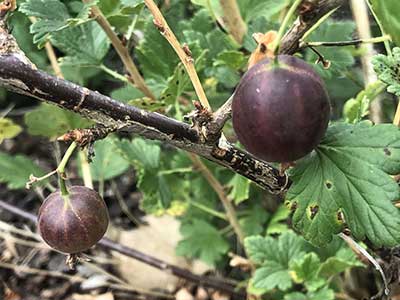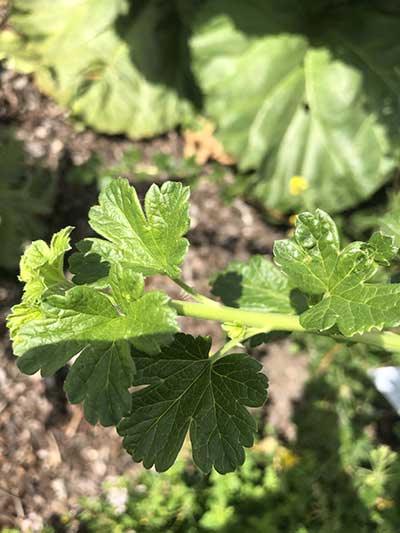Gooseberry
- Scientific Name: Ribes uva-crispa
- Garden: Edibles and Herbs Garden
- Plant Type: Shrub
- Evergreen/Deciduous: Deciduous
- Sun/Shade Exposure: Full Sun or Part Shade
- Moisture Requirements: Moist, Well-Drained
Plant Information
This native gooseberry grows from the North Cascades south to northern California all along the coast range. The flowers of this plant, consisting of drooping inflorescences, distinguish it from other similar species. Also known as Coast Black Gooseberry. Morphology: This native shrub grows to 3’ to 9’ in height, though not as wide. It has arching stems. Some of the stems have bristles, and there may be stout spines at the nodes. The deciduous leaves are heart shaped and palmately lobed. The leaves margins have teeth. Flowers are borne in a pendant fashion beneath the leaves. They consist of 2- to 3-flowered, drooping, slender racemes. The sepals of the flowers are pink. The stamens of the flowers extend well beyond the petals. The flowers morph into black shiny berries. Adaptation: This plant prefers the edges of the conifer forest. It likes full to partial sun. Pests: None reported.
Data Source
www.pnwplants.wsu.eduPlant Photos





